89 F. high in St. Cloud on Wednesday.
82 F. average high on August 3.
79 F. high on August 3, 2015.
August 4, 1898: Storms dump 4 and a half inches of rain on Montevideo.
 No, Meteorologists Don't Study Meteorites
No, Meteorologists Don't Study MeteoritesFor
a "media-rologist" the worst fear is anonymity. "Maul Muglas? I'm
sorry. Never heard of you. Please go away." For the better part of a
generation I've heard: "You hype the weather for ratings!".
Uh no.
But I'd rather be accused of hype than missing a big storm altogether,
and having to answer "Paul, why was there no warning?" As a profession
we tend to err on the side of caution and paranoia.
Meteorologists study "
meteors",
defined as anything in the air: hydrometeors (clouds), electrometeors
(thunder & lightning) and luminous meteors (rainbows and coronas).
But not the shooting star kind.
I'm handcuffed to the Doppler
again today; a line of strong to severe T-storms may flare up along the
leading edge of temporary relief. Dew points drop back into the 50s
Friday and
Saturday.
Good sleeping weather! Weekend weather looks very nice with ample
sunshine, reasonable humidity levels and highs near 80; just a slight
chance of thunder south of MSP
Sunday afternoon. 80s return next week but more free A/C from Canada may arrive by mid-August.
No extended streak of 90s brewing. For now.
Comfortable Weekend.
ECWMF guidance shows a cooling trend - by this time tomorrow dew points
drop into the 50s, meaning roughly half as much water in the air. Warm,
sticky air returns next week, so enjoy the break. Graphic: WeatherBell.
Ripe for T-storms.
NOAA's 4km NAM brings a band of heavy T-storms across the Dakotas into
Minnesota this morning; another wave of strong to severe T-storms may
fire up again this afternoon. Future Radar product: AerisWeather.
Slight Severe Storm Risk.
According to NOAA SPC the best chance of 1"+ hail and wind gusts >
58 mph will comes just south and east of the Twin Cities; a better
chance of warnings from southeastern Minnesota into Wisconsin.
Lingering Heat Wave.
The core of the ridge axis remains pasted over the southern USA,
stretching from California to the central and southern Plains and
southeastern USA. We'll see a few waves of heat, but I don't see
persistent (obnoxious) 90-degree heat, day after day of misery, for
Minnesota and Wisconsin looking out into the third week of August.
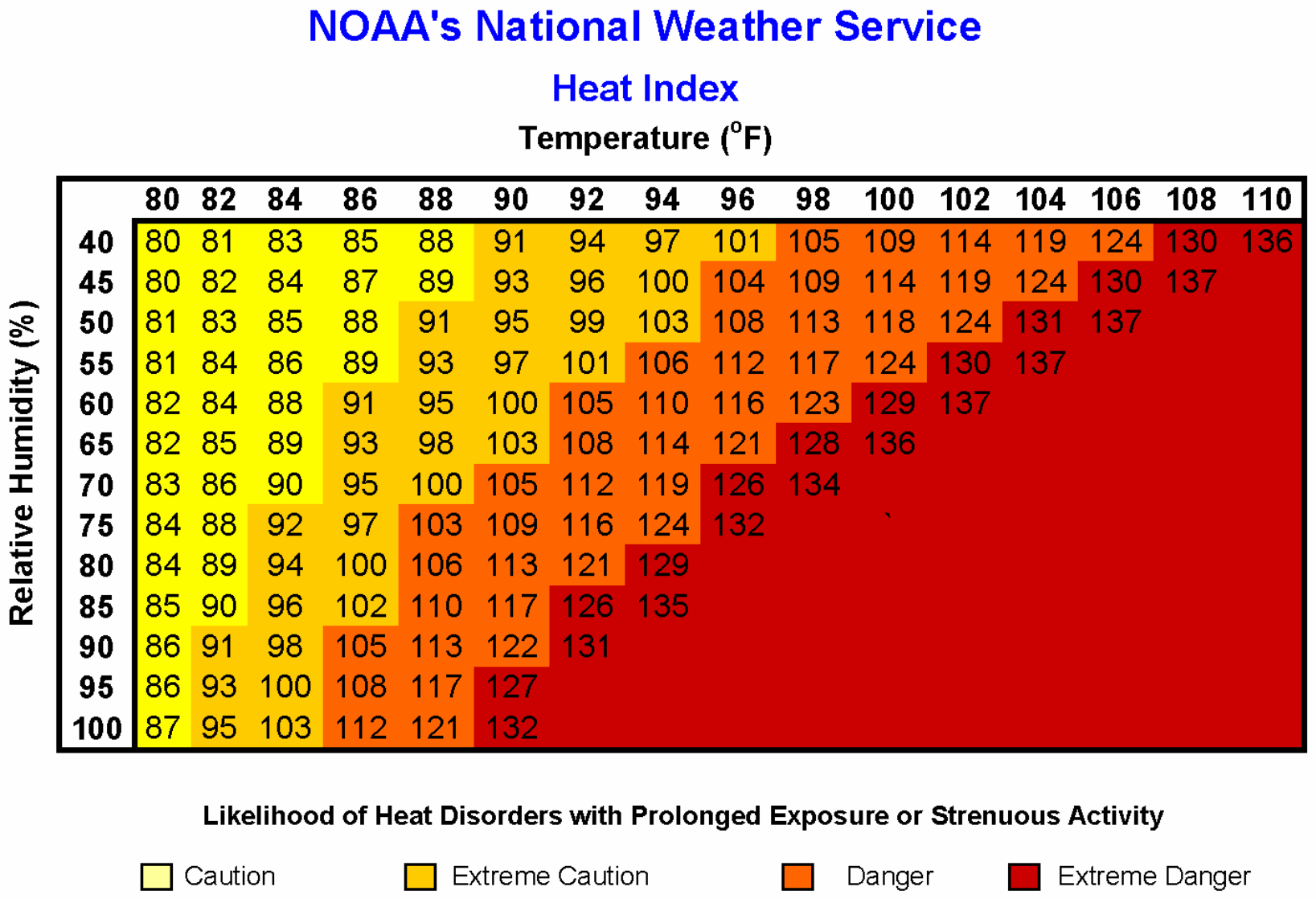 Is The Heat Index Real?
Is The Heat Index Real? The short answer is yes. More context from
Mental Floss: "...
The heat index is the temperature it feels like to your body when you factor in both the actual air temperature
and the amount of moisture in the air. If the heat index is 103°F, that
means that the combination of heat and humidity has a similar physical
impact on your body as it would if the actual air temperature were
103°F. Even though it’s tempting to think of the heat index as an
exaggerated temperature that only exists to make the heat sound worse
than it really is, scientists came up with the measurements after
decades of medical and meteorological research devoted to studying the impact of heat and humidity on the human body. It’s the real deal..."
Major Changes For 3 U.S. Weather Models Are Coming. Here's the intro to a story from Dr. Marshall Shepherd at
Forbes: "
The National Oceanic and Atmospheric Administration (NOAA) announced
that major changes are coming to three of its weather prediction
models. To the weather community and enthusiasts this is a big deal.
However these changes also have impacts for a society which depends on
weather forecasts for day-to-day operations, agriculture, aviation,
national security, emergency response and more..."
Image credit: "
Improved resolution of newly announced NOAA weather forecast model." Courtesy of NOAA.
Countries Are Spending Millions to Control the Weather. Here's Why.
Yahoo News has an interesting story and background: "
This
summer, China set aside $30 million for a controversial project that
involves shooting salt-and-mineral-filled bullets into the sky. Their
mission? Make it rain. The project is part of a larger campaign of
so-called weather modification techniques that the country has been
using since at least 2008, when they claim to have cleared the skies for the Beijing Olympics by forcing the rain to come early. China is far from the only nation trying to bring (or stop) the rain. At least 52 countries — including the United States —
have current weather modification programs, 10 more countries than five
years ago, according to the World Meteorological Organization..."
Weather Disasters Can Fuel War in Volatile Countries.
Scientific American has the story - here's an excerpt: "
Following
the warmest two years on record and spikes in violence that fueled a
global refugee crisis, climate scientists on Monday reported that armed
fighting is prone to follow droughts, heatwaves and other
weather-related calamities in turbulent countries. Nearly a quarter of
deadly armed conflicts in the countries with the most diverse ethnic
makeups from 1980 to 2010 were found to have occurred at around the same
time as an extreme weather event. “It’s significant that you can make
that statement—that nearly 25 percent of those conflicts coincided with
some type of climate-related disaster,” said Jonathan Donges, a Potsdam Institute for Climate Impact Research scientist who helped lead the new study..."
Photo credit: "
African
countries like Uganda are among the world's most ethnically diverse,
and they are also vulnerable to climate change. New findings suggest
peace will be harder to achieve and maintain in places like Uganda as
the climate changes." Credit:
AMISOM Public Information/Flickr
 Planning for Disaster
Planning for Disaster.
Jacobin Magazine
has an interesting post focused on the fairest, most equitable way of
paying for the treadmill of disasters, current and future. Here's a
clip: "...
But when its eventual effects come to batter our door they
will arrive at an exact address: floods and heat waves are intensely
local disasters, and their history tells us that we are very much not in
it together. Anywhere they strike the poorest residents are often hurt
the most, lacking both the resources to rebuild and the protections that
accrue to richer areas. If billions are being committed to fighting the
effects of climate change, we should rightly be asking where they’re
going, and who benefits. And we should ask now because the ball is
already moving on local adaptation projects..."
Photo credit: "
A home after Hurricane Sandy in Staten Island, NY in 2012." John de Guzmán / Flickr.
Evacuate or Stay?
Technology is lulling us into a false sense of security when it comes
to hurricanes. "Hey, I can see them coming satellite and radar - if it
looks bad we can head inland at the last minute." Maybe not. Here's an
excerpt of an excellent article at
Medium: "...
In
all disasters, knowing when, where, and how to escape is key, which
brings us to the hurricane problem. Hurricanes are survivable events.
They don’t strike out of nowhere. We have a battalion of satellites,
buoys, and airplanes to track their every move from their infancy over
the sea to their kamikaze-like demise along our coastlines. Forecasters
man 24-hour weather offices that, in most cases, give days of warning of
an impending storm. Yet some 2,000 people have died, either directly or
indirectly, from hurricanes in modern, 21st century-America..."
Photo credit: "Millions evacuate the Greater Houston metro area ahead of Hurricane Rita in 2005." Source: Public Domain.
Hurricane Drought Hits a New Record. No hurricanes in the Gulf of Mexico for nearly 3 years?
Scientific American explains: "
Saturday
was a quiet day across the Gulf of Mexico, but not one without note,
because a strange record was set: It has been 1,048 days since a
hurricane developed in or entered the Gulf. That is the longest streak
in the past 130 years, since formal record-keeping began in 1886. The
Atlantic hurricane season starts in June and lasts through the end of
November. But the last storm in the Gulf was Hurricane Ingrid, which
made landfall in northeastern Mexico in September 2013. "You have to
have conditions just right for a hurricane to form, and the conditions
haven't been ideal in the Gulf of Mexico in the last two years," says
Robbie Berg, a hurricane specialist at the National Hurricane Center..."
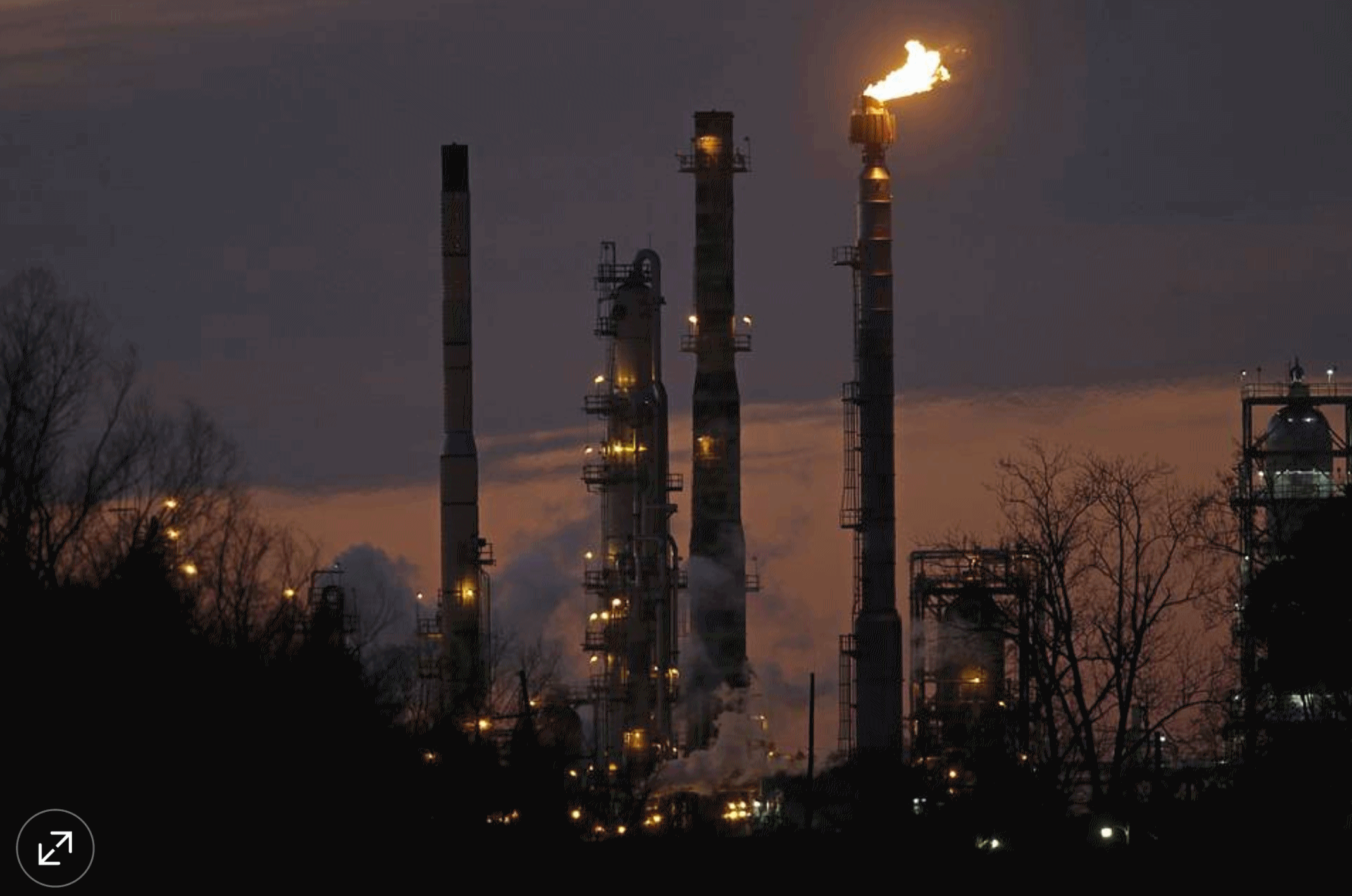
Exxon Official Says a Ban on Fossil Fuel is Unrealistic. The Wall Street Journal has the story - here's an excerpt: "...
The
Exxon official said the company is concerned about the risks climate
change poses, and that it encourages the use of renewable and other
alternative fuels. But he said, for example, that even while the use of
wind and solar power will rise faster than any other energy source
through 2040, those two will still amount to less than 3% of total
energy use. “There are billions of people who need to read, need to
learn, need to improve their standard of living,” he said. “You simply
cannot do this without fossil fuels...”
Photo credit: "Stacks and burn-off from the Exxon Mobil refinery are seen at dusk in St. Bernard Parish, La." Photo: Associated Press.
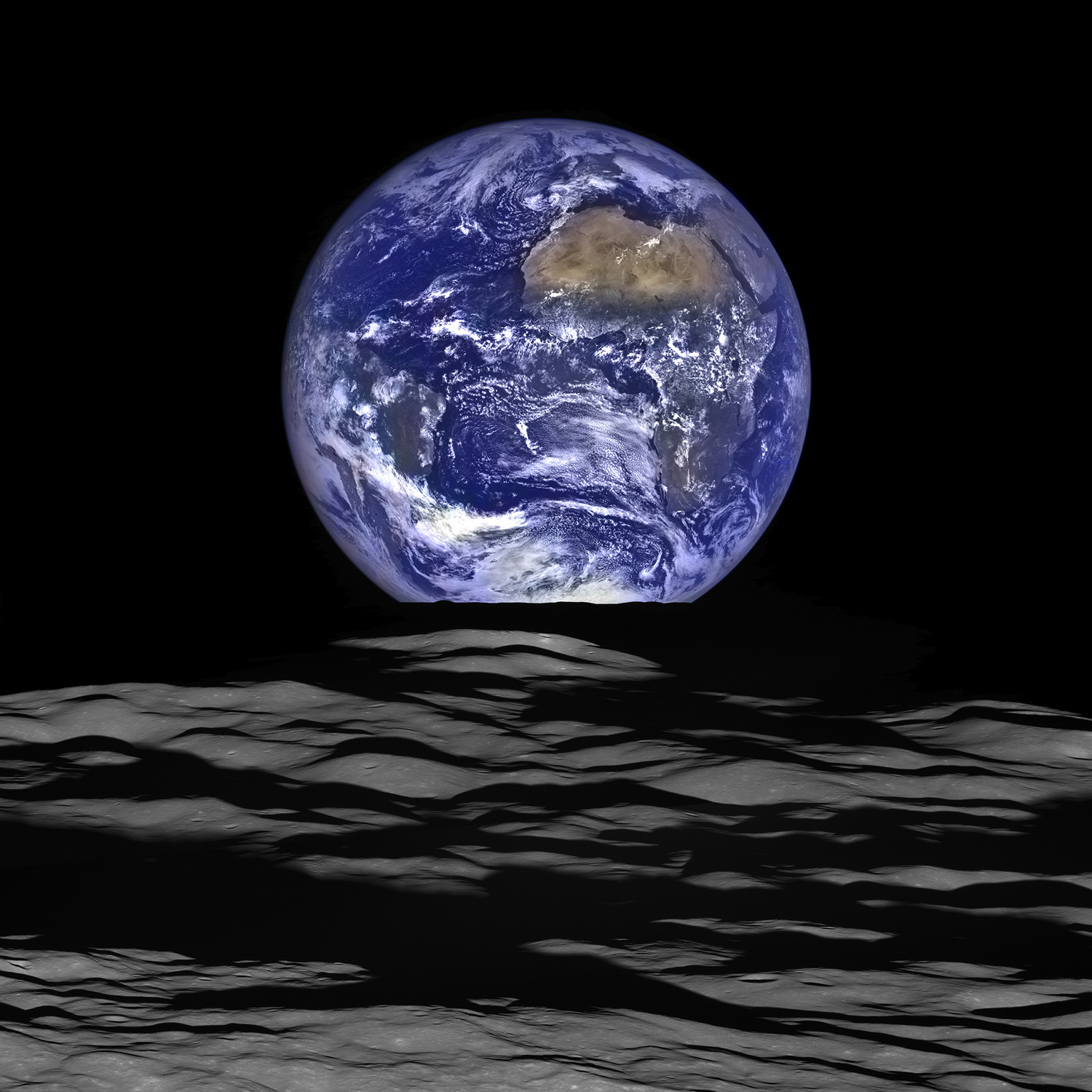 Our Consumption of Earth's Natural Resources Has More Than Tripled in 40 Years. What would sustainable markets, sustainable capitalism look like? Huffington Post has the details: "Limestone
and steel for our homes, wheat and vegetables for our dinner, fossil
fuels for our industries: we rely heavily on our planet’s natural
resources to survive. Yet we’re using up these resources at such an
unsustainable pace that we may be “irreversibly” depleting some of them ―
and critically damaging our Earth in the process, according to a new United Nations report.
The report from the International Resource Panel, part of the UN
Environment Program, said extraction of primary materials has more than
tripled in 40 years. Rising consumption driven by a rapidly growing
middle class is fueling the rate
Our Consumption of Earth's Natural Resources Has More Than Tripled in 40 Years. What would sustainable markets, sustainable capitalism look like? Huffington Post has the details: "Limestone
and steel for our homes, wheat and vegetables for our dinner, fossil
fuels for our industries: we rely heavily on our planet’s natural
resources to survive. Yet we’re using up these resources at such an
unsustainable pace that we may be “irreversibly” depleting some of them ―
and critically damaging our Earth in the process, according to a new United Nations report.
The report from the International Resource Panel, part of the UN
Environment Program, said extraction of primary materials has more than
tripled in 40 years. Rising consumption driven by a rapidly growing
middle class is fueling the rate..." (Image credit: NASA).
Charging Pads Let Electric Car Owners Cut the Cord. A story at
The Detroit News made me do a double-take: "
Electric-vehicle
charging cords could soon go the way of the cassette tape, floppy disk
and landline telephone. Suppliers like Qualcomm Inc. and a handful of
after-market companies offer wireless charging that requires no cords or
physical contact. Some automakers are beginning to implement it on
their fleets, although it will likely first be available mostly on
high-end luxury makes. Mercedes-Benz, for example, will offer wireless
charging on its S550e plug-in hybrid next year..."
Image credit:
inside4tech.com.
Nuclear Power and Renewables Don't Have To Be Enemies. New York Just Showed How. Here's a clip from an explainer at
Vox: "
Consider,
if you will, two basic facts about clean energy in the United States.
Nuclear power is the country’s largest source of carbon-free energy,
supplying about 19 percent of our electricity, but it’s barely growing.
Wind and solar are smaller, at about 8 percent, but they’re growing
much more rapidly. Put those together, and you get an intuitive
blueprint for reducing US carbon dioxide emissions: Protect the nuclear
base, and then scale up wind and solar on top of that, displacing fossil
fuels as you go. Seems reasonable, no?..." (Image credit: Shutterstock).
LED Lighting Miracle: "One of the Fastest Technology Shifts in Human History."
ThinkProgress has details: "...
The
rapid adoption of LEDs in lighting marks one of the fastest technology
shifts in human history,” Goldman Sachs stated in a new report. The
accelerated deployment of light-emitting diode (LED) bulbs is on track
to save U.S. consumers and businesses $20 billion a year in electricity
costs within a decade, which would lower U.S. CO2 emissions by some 100
million metric tons a year! The growing global effort to speed up LED
adoption could ultimately cut global energy costs and carbon pollution 5
times as much..."
Image credit: Shutterstock.
Skydiver Surfs Thunderstorm. Words I've never seen in the same sentence. The
Facebook video from Tech Insider says: "Watch an insane skydiver surf the edge of a thunderstorm." You have to see it to believe it.
Stranger Things.
Part X-Files, part Twilight Zone, part Happy Days (it's set in 1983)
"Stranger Things" is oddly addictive. It's very well done, impressively
creepy - you'll be hooked on Netflix's latest hit series after Episode
2.
TODAY: Very humid with T-storms, some severe. Winds: SW 8-13. High: 87
THURSDAY NIGHT: Evening thunder, then clearing and cooler. Low: 63
FRIDAY: Sunny and comfortable. Winds: NW 10-15. Dew point: 56. High: 79
SATURDAY: Mostly sunny and very pleasant. Winds: NW 5-10. Wake-up: 61. High: 80
SUNDAY: Warm sun, stray T-shower southern MN. Winds: SE 3-8. Wake-up: 61. High: 82
MONDAY: Hazy sun, sticky again. Wake-up: 65. High: 83
TUESDAY: Muggy, best chance of T-storms. Wake-up: 68. High: 86
WEDNESDAY: Tropical, just "hot enough" Winds: S 8-13. Wake-up: 71. High: 90
Climate Stories...
Zillow Says Climate Change Could Leave 2 Million U.S. Homes Underwater - Literally. GeekWire has the story; here's the intro: "
The
U.S. housing market is finally recovering from the Great Recession —
but now comes the tide of an equally insidious threat: Climate change. New Zillow research shows
that unchecked climate change could leave 1.9 million homes underwater
by 2100. Underwater, in this case, does not refer to negative equity. If
sea levels rise by the estimated six feet in 85 years, about two percent of U.S. homes are at risk of being submerged. Those properties are worth a total $882 billion, according to Zillow...."
Photo credit: "
Waterfront properties on Lake Union in Seattle." (Photo via
Shutterstock).
The 10 Most Startling Facts About Climate in 2015 - The Warmest Year on Record. Jason Samenow looks at the data and trends at
Capital Weather Gang: "
Last
year was unequivocally the warmest year on record for Earth. The
National Oceanic and Atmospheric Administration Tuesday released a
300-page report documenting the historic warmth as well as scores of
other aspects of 2015’s climate. The hefty report, State of the Climate in 2015,
was produced by more than 450 scientists from 62 countries around the
world — more than any previous edition. Every single direct indicator of
temperature described in the report leaves no doubt that 2015’s global
surface temperature towered over any year preceding it. Numerous other
climate indicators related to temperature exhibited characteristics
consistent with such historic warmth..."
* Download
State of the Climate in 2015 from the American Meteorological Society.
2015 Set Frenzy of Climate Records. Andrea Thompson has more perspective at
Climate Central: "
The
report, now in its 26th year and published as a special edition of the
journal Bulletin of the American Meteorological Society, was put
together by 456 authors in 62 countries and provides a checkup of
Earth’s health. “We have to understand how the planet is changing and
varying . . . in order to understand where we may be going in the
future,” Thomas Karl, director of NOAA’s National Centers for
Environmental Information, said during a press teleconference. While a
strong El Niño provided a boost to global temperatures last year, the main driver of the planet’s temperature surge,
as well as other climate trends, is the warming caused by the buildup
of greenhouse gases in the atmosphere. And just as many of the records
of 2015 broke those set only one year earlier, 2016 has broken or is
poised to break several of 2015’s records..."
Image credit:
"Ocean heat content in 2015 and trends over time." Credit: NOAA
Fewer Americans Doubt Climate Change - But Confidence Is Up On Both Sides. CSMonitor.com has the latest findings: "Two-thirds of all Americans are confident that climate change is real,
and well-supported by evidence, according to a new National Survey on
Energy and Environment (NSEE), a twice-yearly study from the University
of Michigan and Muhlenberg College in Pennsylvania. Meanwhile, the
number of respondents who say there is no solid evidence of global
warming is at a record low: just 15 percent, versus 24 percent one year
ago. The NSEE has been measuring public opinion on climate change since
2008, when 72 percent of respondents said global warming was a reality..."
Documenting Glaciers In The Dying Days of Ice. You might want to see Glacier National Park while there are still glaciers to see. Here's the intro to a photo essay from
Climate Central: "
National
Parks have grown up with photography. So it’s only fitting that in the
last days of ice in Montana’s Glacier National Park, Lisa McKeon is
using a camera to show how quickly climate change has killed off the
park’s namesakes. After all, it’s one thing to note that of the park’s
150 glaciers that existed in the late 1800s, only 25 of them remain
today. But it’s another to see what that cold, hard fact looks like on
the landscape..."
Photo credit: "
Park visitors eating dinner at Cracker Lake, a glacial-fed lake in Glacier National Park's backcountry." Credit: Jacob Frank/National Park Service.
Conservatives Must Embrace The Fight Against Climate Change. Here's an excerpt of an Op-Ed at
TheHill that resonated: "...
In
my view, the main reason why most conservative politicians deny climate
change is because they believe the issue is simply a front to grow
government. Denying the problem of climate change is easier than
debating solutions. Most of the solutions proposed thus far have
involved imposing more red tape and stringent regulations. What these
conservatives don’t realize is that they have an opportunity to boost
their image, win votes, and promote free enterprise and libertarian
policy solutions by tackling the climate change issue head on rather
than ceding the issue to liberals who use climate change as a vehicle
for big-government policies..."
How Climate Change Has Reemerged on the Campaign Trail. Here's a clip from Christian Science Monitor: "...Democratic nominee Hillary Clinton has moved left and made renewable energy a central part of her platform, while Republican candidate Donald Trump has gone dramatically in the opposite direction,
expressing skepticism about human-caused climate change and promising
to deregulate the fossil fuel industry and to reject both the Paris
climate accord and President Obama’s Clean Power Plan. Yet what this
election has revealed is not just bipartisanship, but splits within the
parties themselves..."
Deadly Maryland Flood Part of Clear Global Warming-Related Pattern in Extreme Rainfall Events. Here's an excerpt from Andrew Freedman at
Mashable: "...
However,
the deadly downpour is consistent with what one expects to occur more
frequently and with greater intensity — and what is already occurring
with greater regularity — in a warming climate. The 2014 National
Climate Assessment, for example, found there was an increase of 71
percent in the heaviest precipitation events in the Northeast between
1958 and 2012. According to Steve Bowen, a meteorologist for the
insurance company AonBenfield, there have been nine 1-in-1,000-year
rainfall events in the U.S. since 2010 alone, including a deadly flooding event in West Virginia in June..."
Photo credit: "
Workers gather by street damage after Saturday night's flooding in Ellicott City, Maryland on, Sunday, July 31, 2016." Image: Kevin Rector/The Baltimore Sun via AP.
Anthrax Spewing Zombie Deer Are the Least of Your Warming Planet Worries. Eric Roston explains at
Bloomberg: "
Climate
change is like a box of chocolates. You never know what you’re going to
get. In northern Russia, you get anthrax.Conditions that are melting
Arctic permafrost there recently thawed the carcasses of deer felled by
anthrax some 75 years ago, when World War II raged. Warmer temperatures
then reactivated the infectious disease, which can survive in
hibernation for decades. More than three dozen people have been
hospitalized, half of them children, though with no confirmed cases. Making matters worse, a heatwave combined with the anthrax outbreak may have killed more than 1,200 deer. New ones..."
Photo credit: "
Reindeer in eastern Siberia." Photographer: Andrey Rudakov/Bloomberg.
Child, 12, Died from Anthrax, As 9 Cases Confirmed of Deadly Disease. More perspective from
Siberian Times: "...
The
boy, Denis, died on Saturday from the virulent intestinal form of
anthrax after eating infected venison. His grandmother died a day
earlier, but as yet the cause is not established. Eight other people are
now confirmed to be suffering from anthrax, including three children,
according to preliminary diagnoses in the outbreak on the Yamal
Peninsula in northern Siberia. The dead boy was a member of a reindeer
herding family. A total of 72 people are now in hospital, a rise of 32
since Friday, under close observation amid fears of a major outbreak. 41
of those hospitalised are children as Russia copes with a full scale
health emergency above the polar circle which has also killed thousands
of reindeer..."
Photo credit: '
I was informed
about the death of the boy in our hospital. There are no words to
express my condition. I feel sorry, I pass my condolences to his parents'. Picture: Press Service of Yamalo-Nenetsk Governor's Office.
Climate Change is Hell on Alaska's Formerly Frozen Highways.
Bloomberg explains: "...
For
seven decades, the Alaska Highway has mesmerized adventure-seeking
travelers. In one breathtaking stretch through the Yukon, glacier lakes
and rivers snake through aspen forests and rugged mountains that climb
into the clouds. In recent years, though, a new sight has been drawing
motorists’ attention, too, one they can spot just a few feet from their
cars’ tires. Bumps and cracks have scarred huge swathes of the road,
with some fissures so deep a grown man can jump in and walk through
them. Scientists say they’re the crystal-clear manifestation that
permafrost -- slabs of ice and sediment just beneath the Earth’s surface
in colder climes -- is thawing as global temperatures keep rising..."
Illustration credit: Sam Dodge for Bloomberg.


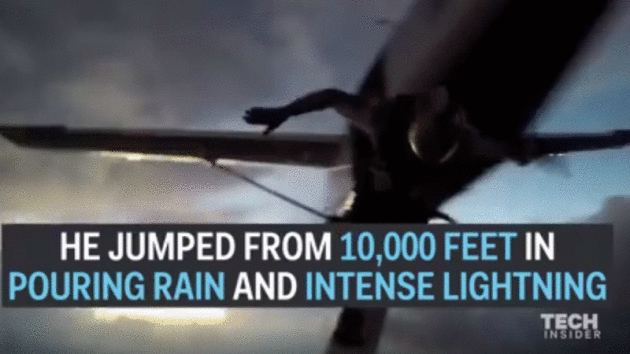

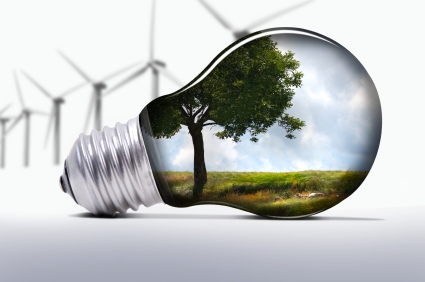
No comments:
Post a Comment